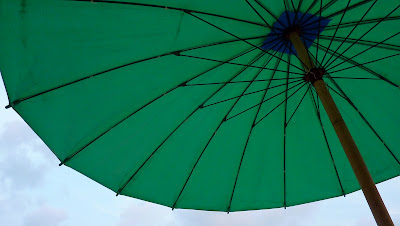(Photo credit: Andrei Sinioukov)
We spent our last weekend in Thailand on Koh Samet island about 4 hours outside of Bangkok surrounded by beach umbrellas.
And we have returned to Dar es Salaam to be surrounded by another variety of umbrellas altogether. It is officially rainy season here, the season for the so-called "big rains". The name captures it all.
(Photo credit: Andrei Sinioukov)
(Photo credit: Andrei Sinioukov)
The last picture is perhaps the most indicative of what the rainy season means for the average Tanzanian. Even within urban areas of Tanzania, including Dar es Salaam, only 79% of people have access to clean and safe water sources, which is actually a marked improvement compared to their rural counterparts, where only 45% of rural inhabitants have access to clean and safe water sources. During the dry season, the majority of women around Tanzania have to walk more than one kilometer to fetch drinking water for their household. The rainy seasons brings a welcome reprieve from this grueling, daily task, when rain water can be collected for household use right outside their front door step.
Watching a downpour from our balcony is like watching time stand still. Movement on the streets below comes to a roaring halt, as everyone waits for the rain to pass to resume their daily goings-about. The only trace of activity during a rain storm is the methodical arrangements of buckets under down spouts to collect the rain waters for household use.
The sound and smell of a big down pour are almost intoxicating. The sound can be deafening at times, rendering conversation impossible on our balcony. The smell is clean, pure, fresh. Before witnessing several of these African rainstorms, I had no idea rain carried such a distinct smell.
---
Source Referenced:
WaterAid Report, 2008











No comments:
Post a Comment